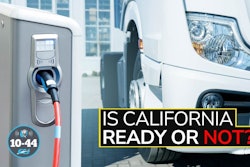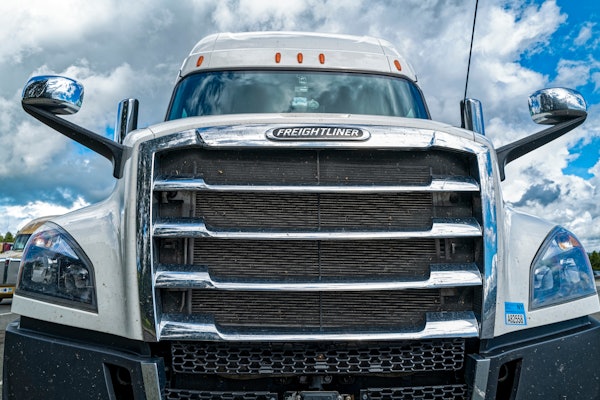Franklin Roosevelt proclaimed in the midst of The Great Depression that the only thing we have to fear is fear itself. In 1963, Maurice Sendak gave us the picture book Where the Wild Things Are, the plot of which is condensed expertly in Wikipedia: “The story focuses on a young boy named Max who, after dressing in his wolf suit, wreaks such havoc through his household that he is sent to bed without his supper. Max's bedroom undergoes a mysterious transformation into a jungle environment, and he winds up sailing to an island inhabited by monsters, simply called the Wild Things. The Wild Things try to scare Max, but to no avail.”
I can’t help but equate the fear mongering being pursued against battery electric cars and trucks with Max’s wild things. Max, the protagonist in the story, successfully conquers his fears and gets his rewards. It’s not a Stephen King horror story, but rather an allegory of mastering feelings and making up one’s own mind based on experience.
In the freight world, FedEx is a great example. Commenting on an 1965 economic paper written by Frederick W. Smith, PBS noted, “As society became more automated, computer companies would need to ensure that their products were dependable. Computers couldn't make business cheaper, faster, and more accurate unless they could be fixed rapidly. Their manufacturers would need a nimble logistics and delivery system to keep their customers happy.”
In 1973 at the age of 29 and amid the start of nearly a decade-long inflationary period and the oil embargo, Smith launched Federal Express with his own money and a network of 25 cities. By 2000, Federal Express was worth $16 billion, operated 584 planes, 38,500 trucks, and employed thousands of people. I suspect that by the year 2000 there were a lot of Monday morning quarterbacks reconsidering their initial 1973 negative assessment of FedEx and people wishing they had invested early in the company.
Battery electric vehicles (BEVs) seem to be all over the news as bad investments, yet when I travel I am seeing them in ever increasing numbers from multiple manufacturers. NACFE held demonstration events of BEV technology in 2021 and 2023 through its Run on Less efforts. I have seen some of the more than 10,000 Rivian battery electric delivery vans carrying Amazon Prime freight in markets all over the U.S. Tesla is reportedly producing more than a million cars a year. There are charging stations all over the U.S. and at homes and businesses. Industry has finally settled on a standard for connecting cars and light trucks to chargers and is on the path for a common standard for medium- and heavy-duty truck charging. So where are all the negative vibes coming from?
Keep in mind that battery electric cars were only introduced to the mass market in about 2010, medium-duty trucks probably about 2019 and heavy-duty trucks not until 2022. The pace of growth of the BEV industry is pretty phenomenal. Those in the trucking industry old enough can recall some vehicle technologies going largely unchanged for a decade or more, where tooling was old enough it had to be funded as an annual capital expense to be replaced.
What is the fear mongering over? Cold weather? Lack of grid capacity? Lack of on-route charging like truck stops and gas stations? Lack of range capability? Poor reliability of charging systems? Risk of fire? High purchase costs? High maintenance? Expensive vehicle damage due to floods and hurricanes? Traditional car manufacturers can’t make money on them, and their dealers don’t want to sell or support them? They can’t do heavy long haul? Shall I go on?
Those are all just fears.
Yet people and fleets are investing in this scary new technology at growing rates. New companies unsaddled by old ways, are breaking into the market. Forward thinking truck fleets and manufacturers are investing in BEV infrastructure and production vehicles. The incredibly risk-adverse utility industry is starting to build new capacity for forecasted increased demand for electricity. Governments are investing billions in BEV-related areas.
What is the fear really all about? It’s about change. What is to become of the profits and jobs as the massive oil-based industry supporting internal combustion engines (ICE) becomes obsolete? The fear is that companies making and selling ICE vehicles will become irrelevant. The fear is the service industries like truck stops and gas stations will become less important. The fear is losing profits.
This movie has been played before; printing presses replacing scribes and calligraphers, mills replacing seamsters, whaling ships being replaced by oil wells, coal steam trains being replaced by diesel-electric ones, stevedore dock workers being replaced by container ports, tube television sets being replaced by flat screen higher resolution monitors, a handful of antenna based television networks being replaced by hundreds of cable channels, vinyl records being replaced by cassettes, being replaced by CDs, being replaced by streaming audio, etc.
Fear in the trucking industry is fueled by a lot of vested interests wishing to maintain their status quo profitability. An associate of NACFE’s lamented recently that perhaps the U.S. has lost its willingness to take risks.
I responded that the flagship for risk taking clearly is visible in SpaceX, Blue Origin, Tesla, Rivian, Nikola, and countless other examples. There is no lack of venture capital today, nor willingness to risk it. There is no lack of invention as clearly we are seeing a new epoch with vastly more intelligent devices and systems. Look at the rapid response the medical industry applied to the COVID-19 pandemic. Look at how quickly major infrastructure gets replaced following catastrophes.
I don’t believe the U.S. has lost its willingness to take risks, nor its ability to innovate. Fear is being overcome, just as Max did in Where the Wild Things Are.
Fear is a disease. It’s spread by rumor and innuendo, by misinformation and by vested interests. Yes, there are challenges with new technologies, including BEVs. But we are moving past the fledgling start-up trials and tribulations and beginning to climb the innovation S-curve where rapid improvements and rapid market adoption occur.
Teslas, Rivians, Polestars, and BEVs from Ford, Volkswagen, Chevrolet and others have become so ubiquitous that we hardly notice them now. Home charging for many of these vehicles also has gone on with little or no fanfare. Is the market waiting for all the companies to build products with the common charging plug? Are they waiting for the next generation of battery technology? Are they waiting for lower cost product offerings from manufacturers? Probably. Is it fear or is it just normal decision making? Not everyone bought the first generation of large screen TVs, but ask yourself when was the last time you saw a tube television?
Yes, some companies can’t seem to make money off BEV offerings. Does that mean that BEVs are not economical to produce in volume, or does it mean that those companies can’t figure out how to compete, while others seem to be able to design, build, sell, service and make profits off them?
BEVs will conquer the fear mongering as the market grows. Those that feed the fear have a range of ulterior motives, but technology will win out in the end. BEVs will get their dinner.












